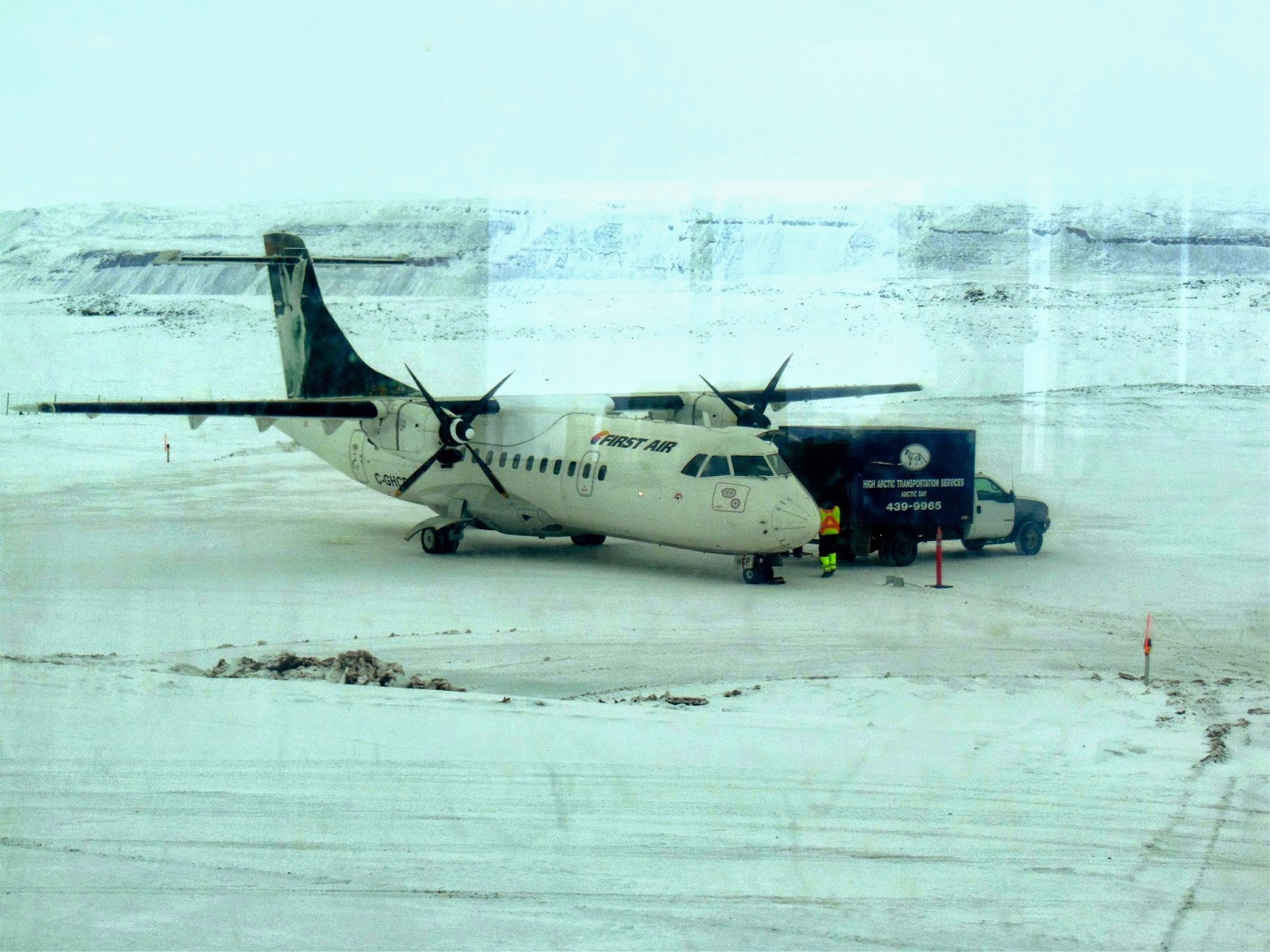Reveille
was at 0700 hours. My male cadets got up
early to shower and get dressed before everyone else. I assumed the females downstairs did the
same. Breakfast, consisting of scrambled
eggs, bacon, sausages, hash browns, bread, and juice, was waiting for everyone
in the mess hall. From where I was
sitting with the adult staff, I could see there was a lot of excitement and
possible tension among the cadets.
Competitions usually spawn rivalries.
After breakfast, everyone walked
over to the Forward Operating Location (FOL) for the beginning of the competition. There wasn't any wind blowing but the cold temperature
was still present. From a distance, the
FOL hangars look small, but up close, they're really big. What's interesting is that the doors open up
by being lifted, like a regular garage door.
I thought they slid open. Large
lights hang from the ceiling, illuminating the interior with orange/yellow
light. Each hangar has a large (and
loud) heater and two large grey tanks designed to douse a burning plane with
foam. The special foam, stored in large
red cylinders is designed to suck the air out of the fire. I was told that you do not want to be around
when that happens because you could suffocate.
So far, the tanks have yet to be deployed in a real fire.
 |
| 3045 Skills Team |
3045 Army began the competition by
completing the marksmanship component.
Handling the Daisy 853C air rifles, the cadets were required to shoot
two relays and score the most bulls eyes.
3019 Corps uses one of the FOL hangars as an air rifle range. In Arctic Bay, 3045 Army uses Inuujaq
School's gym. I stood back and took
pictures of my cadets firing their rifles in the prone position. In the adjacent hangar, the other two teams
were practicing their drill routines.
Once the relays were done, 3045 packed their rifles into protective
cases.
 |
| 3045 Army |
We moved over to the first hangar
and watched 3055 Army practice drill for a few minutes. When they took a break, my cadets took over
and practiced the required drill routine.
The drill routine was designed to test a team's coordination and
discipline when executing movements at the halt and on the march. While 3045 practiced on the parade square, I
got a tour of the FOL facilities from the adult staff of 3019. Though the layout was different, the
classrooms, offices, kitchen, and other rooms reminded me of the cadet building
of 795 Iqaluit Air Squadron. One day, I thought, 3045 will have a place of its own to call home.
 |
| Heater (top), Foam Tank (bottom) |
Before
lunchtime, the teams from Repulse Bay & Arctic Bay were given the
opportunity to shop at the local Northern Store. Rankin Inlet also has a Co-op but there was only
enough time to visit one store. The
Northern Store here is big and sells many more products; it also contains a
true Canadian treasure: Tim Hortons. I
browsed through all the aisles before buying a few movies and some other
things. My cadets went to town; they
were like kids at a candy store. While
sipping an Iced Capp and eating a Tim Hortons donut, a few shoppers asked me if
we were visiting from another community.
After explaining that we were from Arctic Bay, they wanted to know if we
liked Rankin Inlet and if it was any different.
"More people and more wind," I replied. "And it reminds me of Iqaluit." We were driven back to the FOL where we
feasted on sandwiches, fruit, and juice for lunch.
 |
| Cylinder tanks containing foam. |
The afternoon saw all three teams
complete the leadership tasking - move to a designated area, set up a
five-person tent, and boil a cup of hot water on a Coleman stove in the least
amount of time. When it was Arctic Bay's
turn, I reminded my cadets that once the "Go!" command was given,
they were on their own. I could only
observe and not intervene . . . unless someone got seriously hurt.
3045 Army raced to the other end of the FOL, pulling a sled carrying the tent, Coleman stove, tea kettle, metal cup, shovel, hammer, and a fire extinguisher. They halted in front of Hangar 5 and unloaded the contents on the sled. Following the team leader's instructions, one cadet worked on the Coleman stove while the other seven put up the tent. It didn't take long to boil the cup of hot water but putting up the tent took some time. I hoped the added time wouldn't greatly impact the overall score. When time was called, the officer-in-charge inspected the tent with the team leader while the other cadets breathed sighs of relief. When the inspection was completed, the team received a debriefing on what they did correctly, what improvements could be done next time, and what they learned.
Dinner was held at the Personnel Accommodation Barracks (PAB) because thereafter, the cadets needed to shower, polish their parade boots, and change into their green dress uniforms. Everyone walked back to the FOL to partake & observe the drill component of the competition. The cadets had been instructed to wear sports shoes so as not to get dust and gravel on their polished parade boots. Once everyone was inside, the 3019 Skills Team went first. The audience was quiet as the platoon commander shouted commands and the team reacted instantly, moving their feet and bodies in synchronized movements. They always ended with a loud stomp. I glanced at the faces of 3045 Army and noticed expressions of worry. Were they feeling intimidated or just shy? 3055 Repulse Bay probably felt the same way.
 |
| 3045 Army cadets get debriefed after completing the leadership tasking. |
To
Be Continued . . .

















































